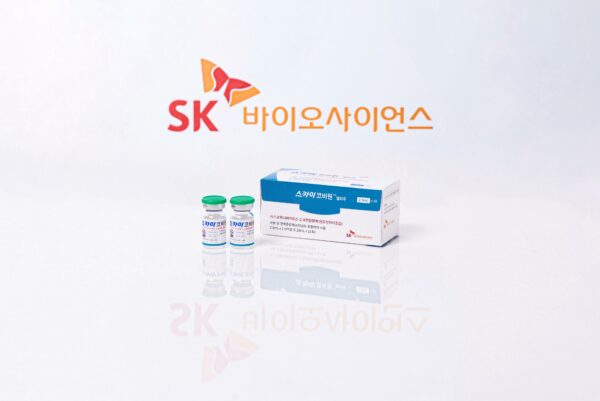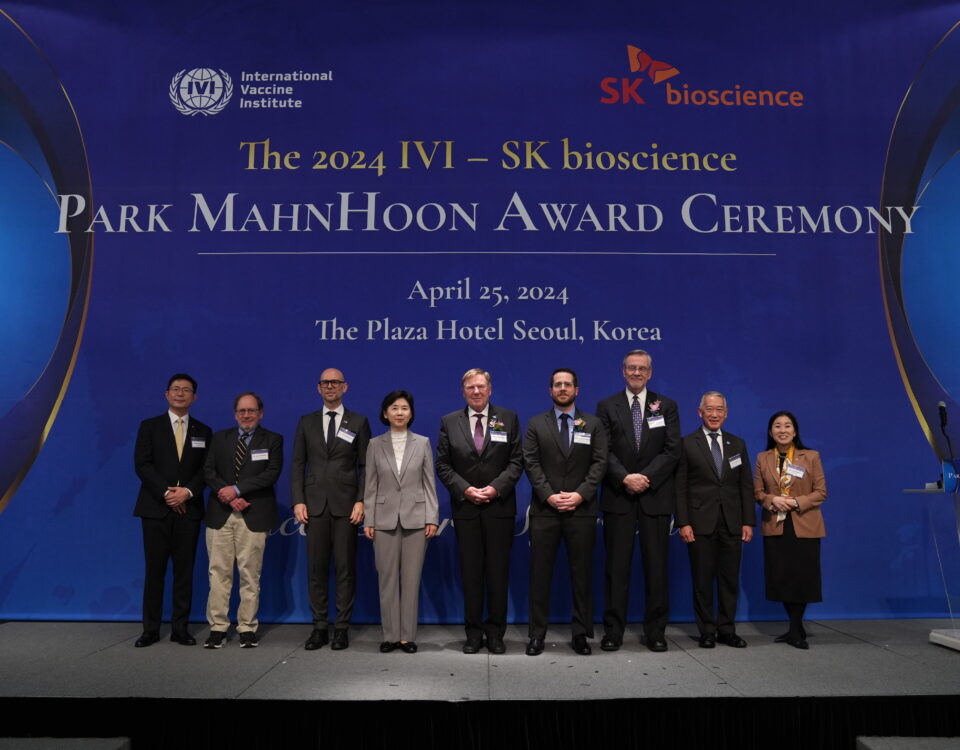- UK’s MHRA authorizes marketing of SK bioscience’s SKYCovion™
- IVI supporting global clinical trial, sample analysis, regulatory process for MA in UK and WHO’s Emergency Use Listing to enhance equitable global access to vaccines
SK bioscience’s COVID-19 Vaccine receives Marketing Authorization from UK regulatory authority
SK bioscience’s COVID-19 Vaccine receives Marketing Authorization from UK regulatory authority

WHO's Emergency Use Listing adds SKYCovion™ COVID-19 vaccine. Photo courtesy of SK bioscience

June 1, 2023, SEOUL, Republic of Korea – The UK’s Medicines and Healthcare Products Regulatory Agency (MHRA) has granted marketing authorization (MA) for SK bioscience’s COVID-19 vaccine SKYCovion™ (brand name in Korea: SKYCovione™) as a primary series for active immunization to prevent COVID-19 in individuals 18 years of age and older. It is now the eighth COVID-19 vaccine authorized by the UK’s independent medicines regulator, and the MA covers England, Scotland, and Wales.
The MHRA’s decision is based on data from the Phase III trial that showed the vaccine induced neutralizing antibody responses against SARS-CoV-2 parental strain and had a standard safety and reactogenicity profile after being administered as a primary series of two doses. SKYCovion™ has demonstrated clinically meaningful efficacy and safety through primary vaccination in the phase III clinical trial targeting 4,036 adults aged 18 or older in Korea and 5 additional countries.
The International Vaccine Institute (IVI) coordinated the global clinical trial conducted in those five countries and performed clinical sample analysis of the trial in collaboration with the Center for Vaccine Research at the National Institute of Health of Korea. Based on clinical results confirming its effect in preventing COVID-19, SKYCovion™ received official approval in Korea in June last year.
Jaeyong Ahn, CEO of SK bioscience, said, “We are delighted with the MHRA’s authorization of Korea’s first COVID-19 vaccine SKYCovion™. This is the result of our commitment to protecting and promoting global public health. We are confident it will be a key milestone to solidify our position in the global market amid the transition of the pandemic to the endemic phase.”
SK bioscience has applied for an Emergency Use Listing (EUL) by the World Health Organization (WHO) and MA from the European Medicines Agency (EMA).
SKYCovion™, the protein-based vaccine developed with GSK’s pandemic adjuvant, can be stored between 2-8 degrees Celsius, making it suitable for use in countries where ultralow temperature cold chain is not available. This flexibility could help improve vaccine equity and increase vaccination coverage in low-income countries.
“IVI joins partners around the world in congratulating SK bioscience on the approval of its COVID-19 vaccine by the UK’s regulatory authority,” said Dr. Sushant Sahastrabuddhe, Acting Deputy Director General for Clinical and Regulatory at IVI. “This constitutes yet another milestone in our concerted efforts to bring the vaccine to the global health market, particularly in low- and middle-income countries. IVI is proud to have supported SK bioscience in the clinical trial, clinical sample analysis, preparation of dossiers and regulatory process.”
SKYCovion™ is developed jointly by SK bioscience and the Institute for Protein Design (IPD) from the University of Washington. The development of SKYCovion™ was supported by funding from the Coalition for Epidemic Preparedness Innovations (CEPI) with funding support from the European Union’s Horizon 2020 Programme, and its pre-clinical trials were funded by the Bill & Melinda Gates Foundation.
####
About the International Vaccine Institute (IVI)
The International Vaccine Institute (IVI) is a non-profit international organization established in 1997 at the initiative of the United Nations Development Programme with a mission to discover, develop, and deliver safe, effective, and affordable vaccines for global health.
IVI’s current portfolio includes vaccines at all stages of pre-clinical and clinical development for infectious diseases that disproportionately affect low- and middle-income countries, such as cholera, typhoid, chikungunya, shigella, salmonella, schistosomiasis, hepatitis E, HPV, COVID-19, and more. IVI developed the world’s first low-cost oral cholera vaccine, pre-qualified by the World Health Organization (WHO), and developed a new-generation typhoid conjugate vaccine that is currently under assessment for WHO PQ.
IVI is headquartered in Seoul, Republic of Korea with a Europe Regional Office in Sweden and Collaborating Centers in Ghana, Ethiopia, and Madagascar. 39 countries and the WHO are members of IVI, and the governments of the Republic of Korea, Sweden, India, Finland, and Thailand provide state funding. For more information, please visit https://www.ivi.int.
Related posts
Awardees and dignitaries pose for a commemorative photo at the 2024 IVI – SK bioscience Park MahnHoon Award Ceremony at the Plaza Seoul Hotel on April 25, 2024. From left: Mr. Jae-Yong Ahn, President of SK bioscience; Dr. John Clemens, first Director General of IVI; Dr. Lars Hammarström, Head of the Office of Science & Innovation, Embassy of Sweden in Korea; Dr. Youngmee Jee, Commissioner of the Korea Disease Control and Prevention Agency; Prof. Jan Holmgren, Prof. Jason McLellan, Prof. Barney Graham, Dr. Jerome Kim, Director General of IVI; and Ms. Joy Sakurai, Deputy Chief of Mission, US Embassy, Seoul. Credit: IVI


